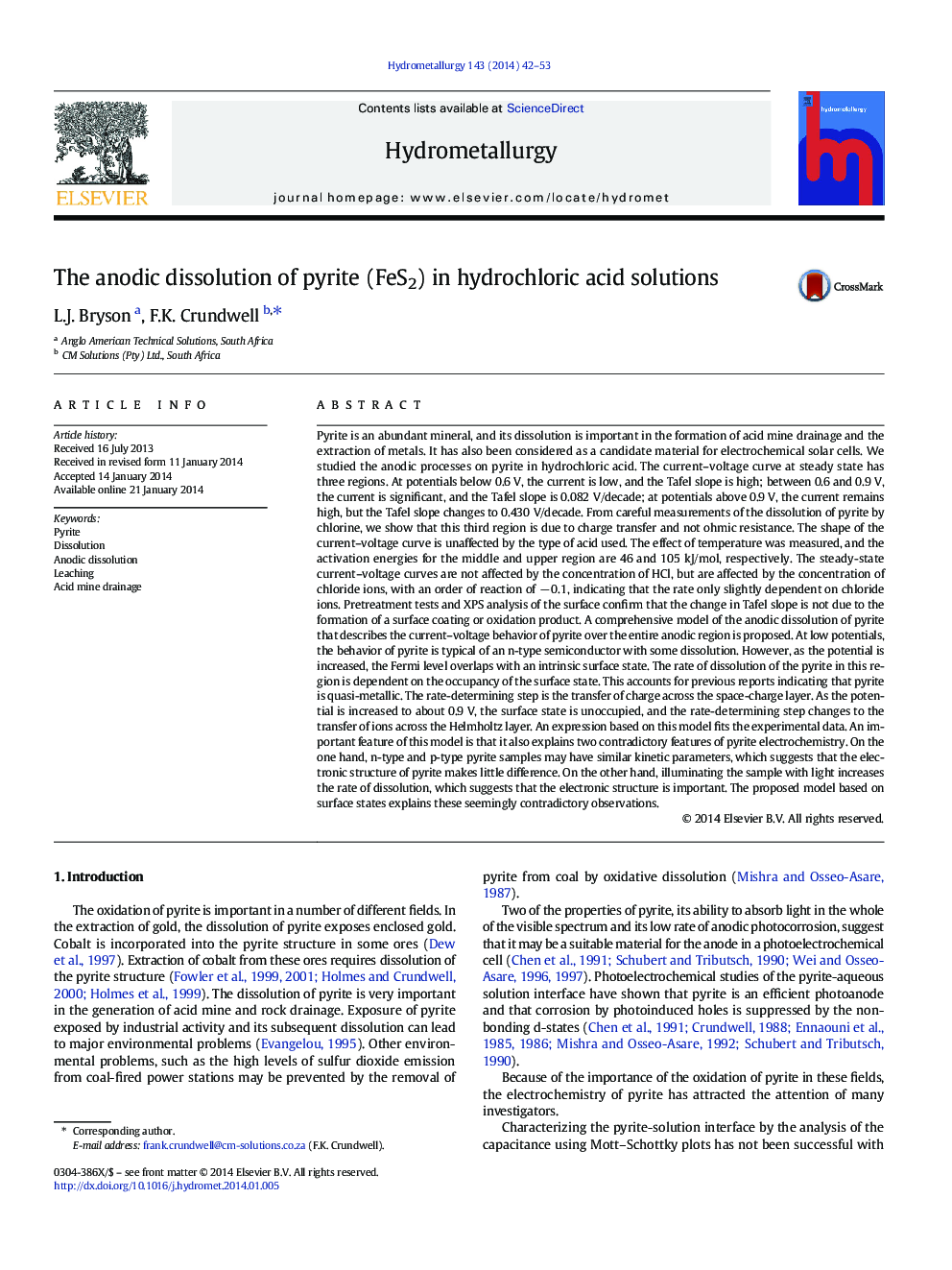| کد مقاله | کد نشریه | سال انتشار | مقاله انگلیسی | نسخه تمام متن |
|---|---|---|---|---|
| 212288 | 462040 | 2014 | 12 صفحه PDF | دانلود رایگان |

• Anodic dissolution of pyrite consists of three Tafel regions, not two.
• All three regions are due to charge transfer processes.
• Surface states play a central role in the dissolution mechanism.
• Model based on surface states describes the dissolution of all three Tafel regions.
Pyrite is an abundant mineral, and its dissolution is important in the formation of acid mine drainage and the extraction of metals. It has also been considered as a candidate material for electrochemical solar cells. We studied the anodic processes on pyrite in hydrochloric acid. The current–voltage curve at steady state has three regions. At potentials below 0.6 V, the current is low, and the Tafel slope is high; between 0.6 and 0.9 V, the current is significant, and the Tafel slope is 0.082 V/decade; at potentials above 0.9 V, the current remains high, but the Tafel slope changes to 0.430 V/decade. From careful measurements of the dissolution of pyrite by chlorine, we show that this third region is due to charge transfer and not ohmic resistance. The shape of the current–voltage curve is unaffected by the type of acid used. The effect of temperature was measured, and the activation energies for the middle and upper region are 46 and 105 kJ/mol, respectively. The steady-state current–voltage curves are not affected by the concentration of HCl, but are affected by the concentration of chloride ions, with an order of reaction of − 0.1, indicating that the rate only slightly dependent on chloride ions. Pretreatment tests and XPS analysis of the surface confirm that the change in Tafel slope is not due to the formation of a surface coating or oxidation product. A comprehensive model of the anodic dissolution of pyrite that describes the current–voltage behavior of pyrite over the entire anodic region is proposed. At low potentials, the behavior of pyrite is typical of an n-type semiconductor with some dissolution. However, as the potential is increased, the Fermi level overlaps with an intrinsic surface state. The rate of dissolution of the pyrite in this region is dependent on the occupancy of the surface state. This accounts for previous reports indicating that pyrite is quasi-metallic. The rate-determining step is the transfer of charge across the space-charge layer. As the potential is increased to about 0.9 V, the surface state is unoccupied, and the rate-determining step changes to the transfer of ions across the Helmholtz layer. An expression based on this model fits the experimental data. An important feature of this model is that it also explains two contradictory features of pyrite electrochemistry. On the one hand, n-type and p-type pyrite samples may have similar kinetic parameters, which suggests that the electronic structure of pyrite makes little difference. On the other hand, illuminating the sample with light increases the rate of dissolution, which suggests that the electronic structure is important. The proposed model based on surface states explains these seemingly contradictory observations.
Journal: Hydrometallurgy - Volume 143, March 2014, Pages 42–53